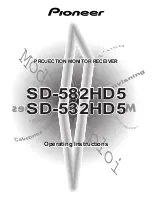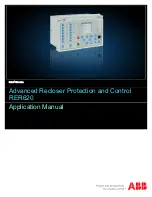
DET-882
SecoGear Medium-voltage Switchgear Application and Technical Guide
Standard SecoGear Construction, Features, and Installation
©2017 General Electric All Rights Reserved
63
INSTALLATION INFORMATION
Typical estimating weights and dimensions are given in
Table 6-1. Figure 6-29 provides typical equipment
envelopes for layout and planning. Figure 6-30 through
Figure 6-33 provide floor plan details showing anchor bolt
locations. Power conductor and secondary conduit
entrance locations are found in Figure 6-31 and
Figure 6-32.
Shipping Splits
Most metal-clad switchgear lineups require many vertical
sections, or stacks. These multi-section lineups are broken
down into shipping splits of two stacks or less after the
lineup is assembled and tested at the factory. For confined
spaces at a jobsite, individual stack shipping sections are
available but must be specified to engineering when
ordering.
Each shipping section is bolted to wooden skids, which can
be moved with a fork truck. A two stack shipping section
will be approximately 118 in. deep, 100 in. high, and 88 in.
wide, weighing 14,000 lbs. These shipping sections must be
reassembled in the correct order when received at the job
site.
Indoor Foundation Preparation
SecoGear switchgear can be mounted directly on a flat
level floor; installation drawings are furnished with the
equipment showing the proper way to install channel sills.
Anchoring SecoGear to the floor or channels must be
properly done with a minimum of M12 (1/2 in.) Grade 5
bolts in specific locations. (See anchoring details in
Figure 6-30.)
SecoGear requires a SecoVac VB2+ circuit breaker able to
operate under fault conditions that cause a shock stress
approximately 1-1/2 times the static load. The weight of
the switchgear structure and the shock stress caused by
the opening of the breakers require a strong foundation of
the switchgear section. The finished floor must extend 78
in. beyond the front of the equipment, providing enough
space to operate the lift truck to rack in or rack out the
breakers.
The foundation must be flat (surface of pad must lie
between two parallel, level planes spaced 1/8 in. apart) and
level in all planes. Planes must be perpendicular to plumb
line, perpendicular on both axes to within 1/4 in. across a
10 ft. span.
CAUTION
It is very important to measure how far the pad is out
of level and to what degree this varies over the
installation. A foundation pad that is not flat and level
can result in problems with breaker alignment and the
racking mechanism operation, as well as placing
unusual stresses on insulators and supporting
structures.
Table 6-1: SecoGear Characteristics
Specification
One-high Breaker Configuration
Two-high Breaker Configuration
1200/31.5 Rating 1200/40 Rating 2000/40 Rating 1200/31.5 Rating 1200/40 Rating 2000/40 Rating
Weight
1,2
3337 lbs.
[1517 kg]
3401 lbs.
[1546 kg]
3803 lbs.
[11729 kg]
4814 lbs.
[2188 kg]
4943 lbs.
[2247 kg]
5604 lbs.
[2547 kg]
Height (h)
95 in. [2413 mm]
Width (w)
36 in. [914 mm]
Depth (d)
95.05 in [2414 mm]
Notes:
1.
If a VT rollout is provided, add 608 lbs. [276 kg].
2.
If a CPT rollout is provided, add 632 lbs. [287 kg].





































